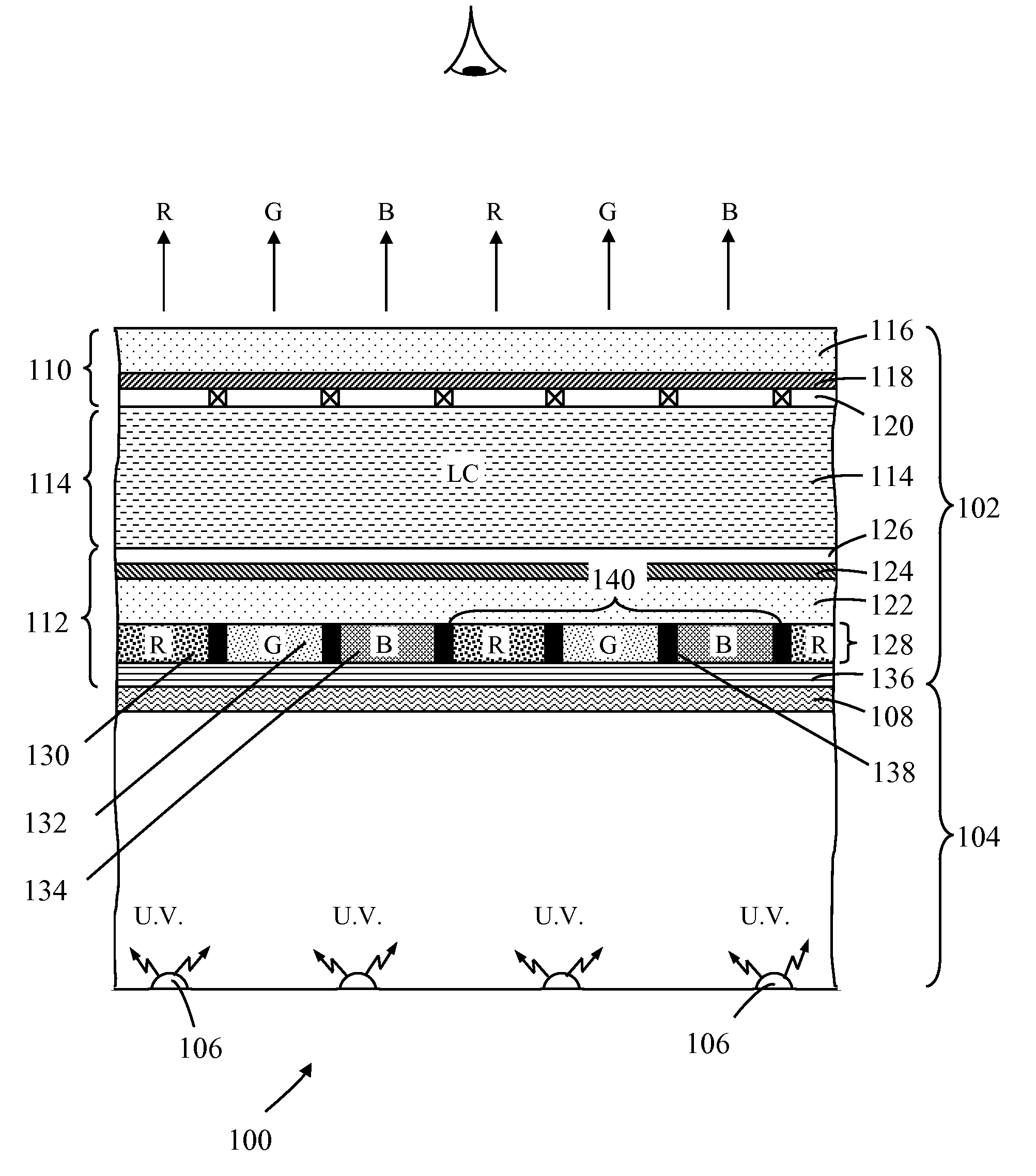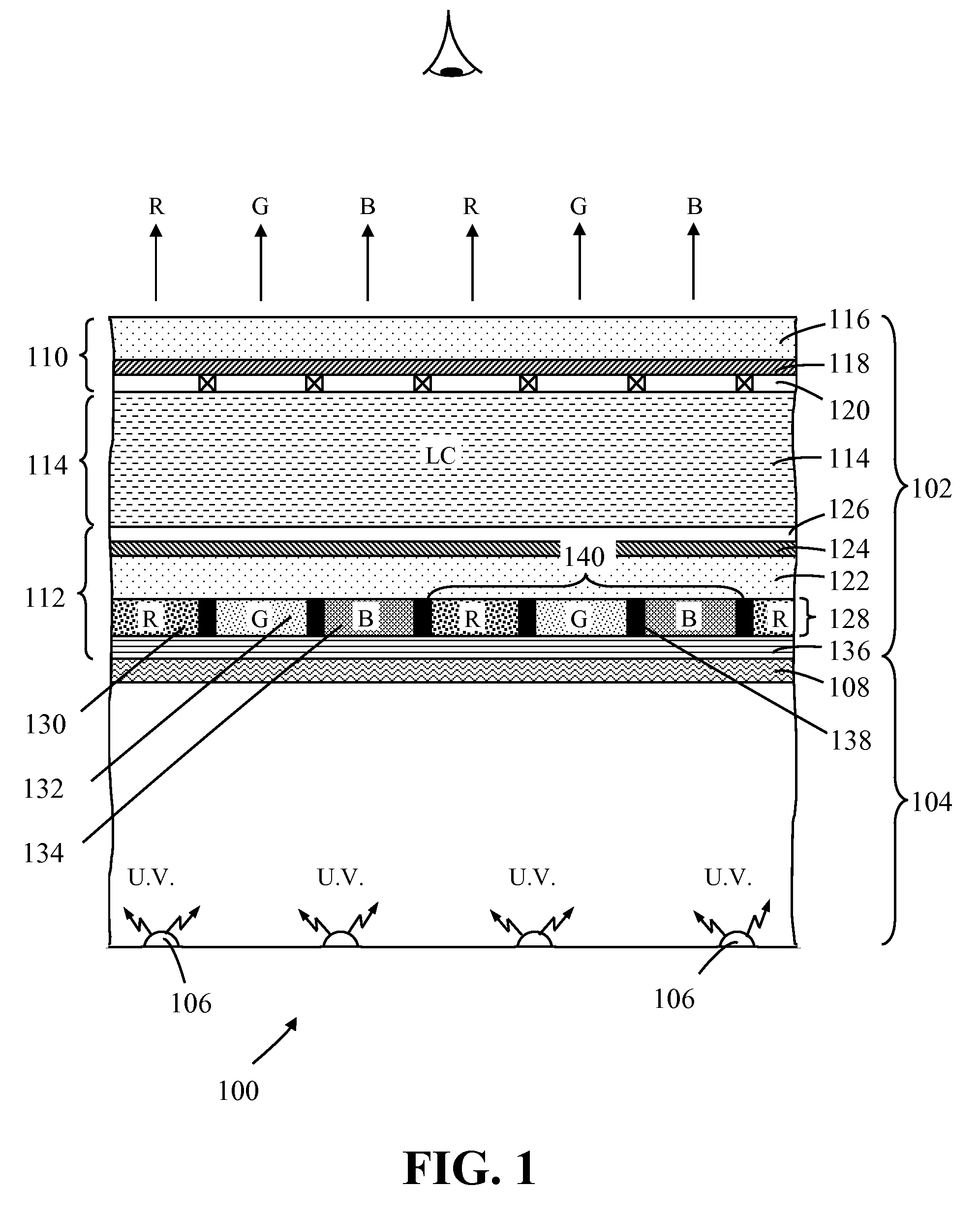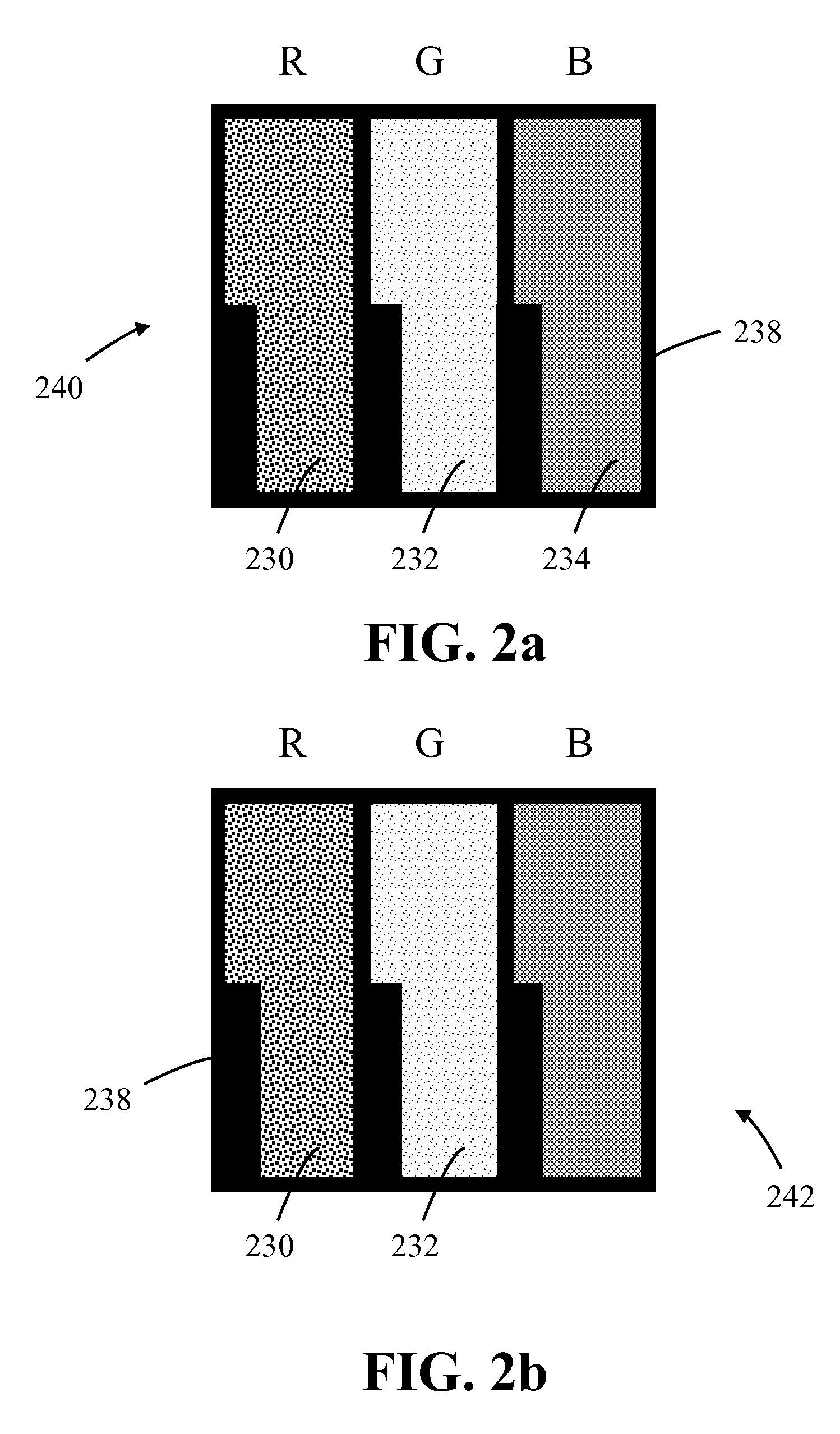Photoluminescence color display
a color display and photoluminescence technology, applied in non-linear optics, instruments, optics, etc., can solve the problems of wasting significant amount of backlight intensity, complicated driving circuitry, and unfavorable photoluminescence, and achieves better contrast ratio, purity and realism, and 90% efficiency of light output
- Summary
- Abstract
- Description
- Claims
- Application Information
AI Technical Summary
Benefits of technology
Problems solved by technology
Method used
Image
Examples
Embodiment Construction
[0056]Disclosed herein is a novel color rendering scheme designed to improve and enhance the brightness and sharpness of an electronic display, such as a liquid crystal display (LCD).
[0057]Embodiments of the present invention incorporate two key components: 1) a photoluminescence color panel (photoluminescence color-elements plate) having regions of photoluminescence material corresponding to each of the different color pixel areas of the display, and 2) a monochromatic or quasi-monochromatic short-wavelength excitation light source for exciting the photoluminescence material on the color panel. Additionally, a wavelength selective filter can be provided between the photoluminescence color panel and the excitation light source in order to prevent cross contamination of light among the different pixel areas of the display.
[0058]Referring to FIG. 1 there is shown a schematic cross-sectional representation of a photoluminescence color LCD 100 according to a first embodiment of the inve...
PUM
| Property | Measurement | Unit |
|---|---|---|
| wavelength | aaaaa | aaaaa |
| wavelength | aaaaa | aaaaa |
| wavelength | aaaaa | aaaaa |
Abstract
Description
Claims
Application Information
 Login to View More
Login to View More - R&D
- Intellectual Property
- Life Sciences
- Materials
- Tech Scout
- Unparalleled Data Quality
- Higher Quality Content
- 60% Fewer Hallucinations
Browse by: Latest US Patents, China's latest patents, Technical Efficacy Thesaurus, Application Domain, Technology Topic, Popular Technical Reports.
© 2025 PatSnap. All rights reserved.Legal|Privacy policy|Modern Slavery Act Transparency Statement|Sitemap|About US| Contact US: help@patsnap.com



